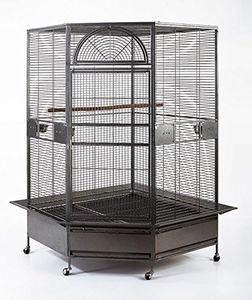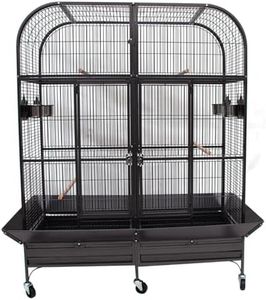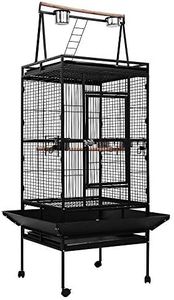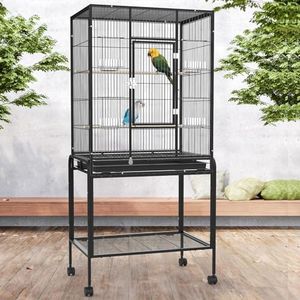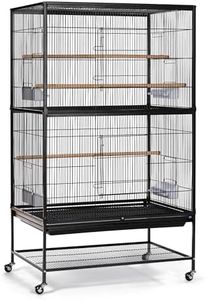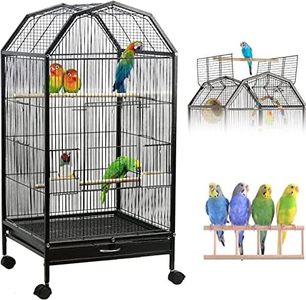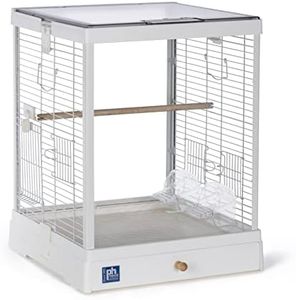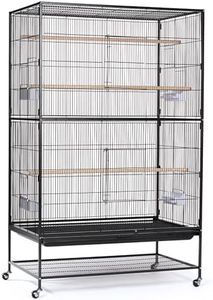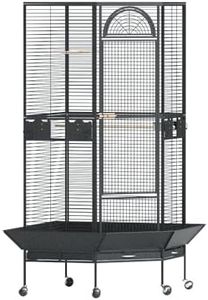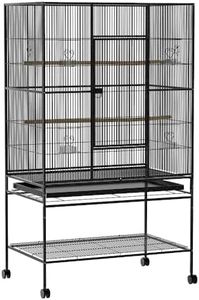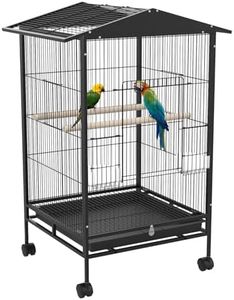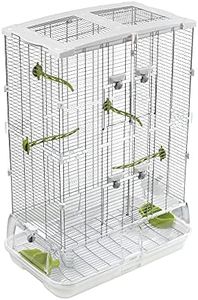We Use CookiesWe use cookies to enhance the security, performance,
functionality and for analytical and promotional activities. By continuing to browse this site you
are agreeing to our privacy policy
10 Best Bird Cages
From leading brands and best sellers available on the web.By clicking on a link to a third party's website, log data is shared with that third party.
Buying Guide for the Best Bird Cages
Picking the right bird cage is essential to your bird’s health, happiness, and wellbeing. A cage is much more than just a container—it’s your bird’s home. When shopping for a bird cage, you should consider your bird’s size, activity level, and personality. Think about where you will place the cage in your home, how easy it will be to clean, and how it fits your daily routine. A good cage provides safety, comfort, and enough room for movement and play.Cage SizeCage size refers to the length, width, and height of the cage itself. This is crucial because your bird needs enough space to stretch, flap its wings, play, and move around comfortably. Sizes range from very small (for finches and canaries) to large (for parrots and cockatoos). If you have a small bird, a more compact cage might suffice, but always choose the largest cage that fits your space and the species you have. Larger and more active birds need more vertical and horizontal space, while smaller birds still benefit from a bit of extra room to fly from perch to perch. Always remember: bigger is usually better as long as the bar spacing is safe.
Bar SpacingBar spacing is the distance between the vertical or horizontal bars of the cage. This is important for your bird’s safety: if the bars are too far apart, your bird might squeeze its head through and get stuck or escape; if they’re too close, it limits the bird’s view and movement. Bar spacing should be matched to your bird’s size—finches or budgies need narrow spacing (around 0.5 inches or less), while larger birds like Amazons or African Greys can have wider spacing (up to 1 inch or more). Always check the recommended bar spacing for your specific bird species.
Cage MaterialThe material describes what the cage is made from, usually stainless steel, powder-coated metal, or less commonly plastic. This matters for durability, safety, and maintenance. Stainless steel is the most durable, rust-resistant and the safest, but typically heavier. Powder-coated cages are also strong and come in various colors but can chip over time. Plastic cages are generally less recommended for larger birds or for long-term use. Pick a material that is non-toxic, easy to clean, and suits where you live (high humidity areas may need rust-resistant materials).
Ease of CleaningEase of cleaning means how simple it is to remove waste, swap out bedding or paper, and disinfect the cage. Features like slide-out trays, doors that grant good access, and rounded corners help make cleaning faster and more effective. Frequent cleaning keeps your bird healthy, so look for cages that make this task easy for your routine.
Cage ShapeCage shape refers to the overall design—rectangular, circular, tall, or wide. This isn’t just about looks; it influences how your bird interacts with its space. Rectangular cages offer more usable area for flying and perching. Tall cages suit birds that like to climb, but width is usually more important for birds that fly around. Avoid cages with unusual shapes if they sacrifice space or are hard to clean.
Doors and Access PointsDoors and access points are the openings you use to reach your bird, change food and water, or clean the cage. Well-designed cages offer secure, bird-proof doors that open smoothly and are large enough for easy access. Multiple doors or feeder access can make daily care easier. Make sure openings are secure to prevent escapes, and that you can reach all parts of the cage without trouble.
Included AccessoriesIncluded accessories can be perches, food and water dishes, ladders, or toys. While not the most critical feature, starting with a cage that comes with the basics is handy. However, you’ll often need to add your own accessories over time to match your bird’s preferences and needs. Look for cages that can be customized and accommodate extra perches or toys.
Mobility and PlacementMobility refers to whether the cage can be moved easily, often thanks to wheels. Placement is where in your home the cage will stand. If you plan to move the cage for cleaning or to give your bird a change of scenery, wheels and a manageable weight are helpful. Make sure the cage fits well in your chosen space and that it’s away from drafts, direct sun, and kitchens.
